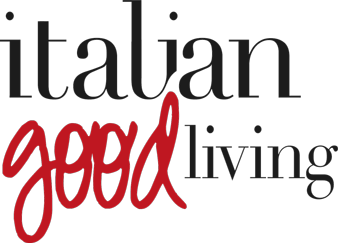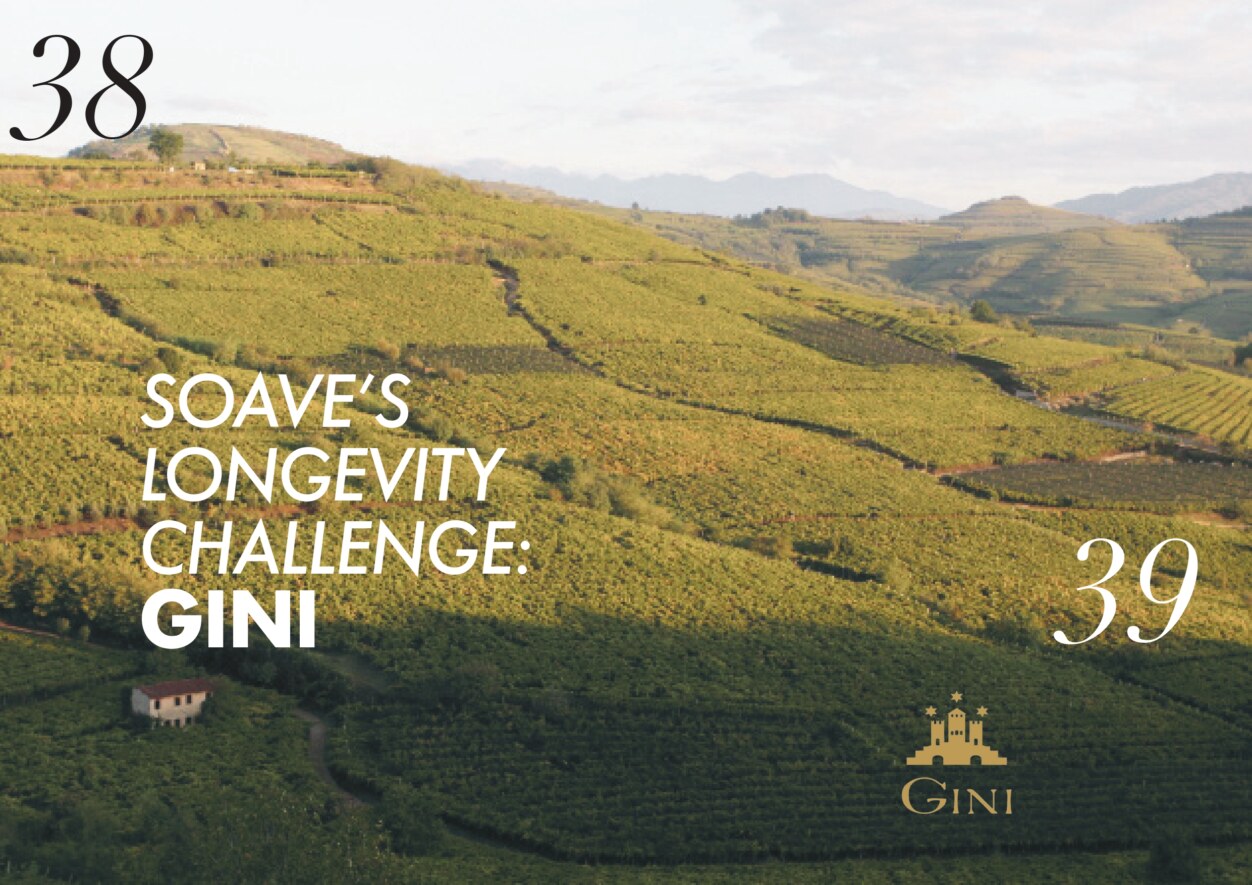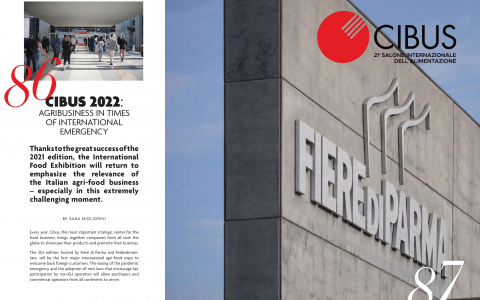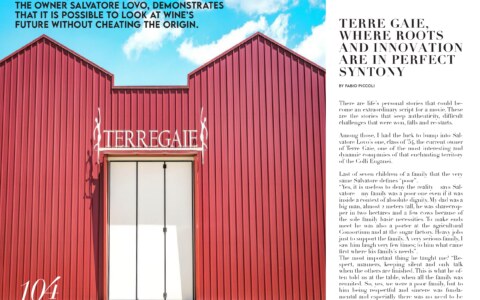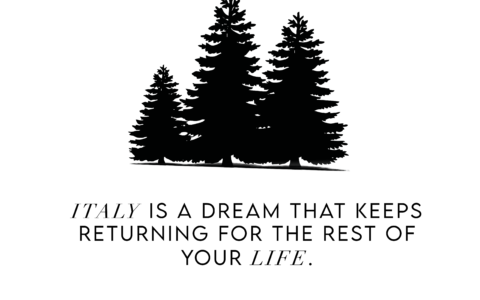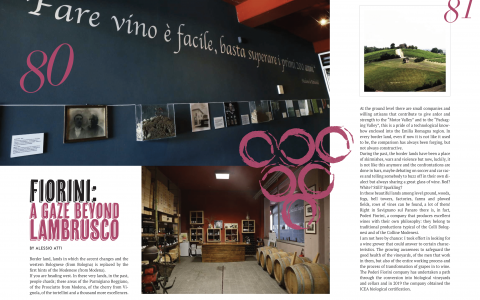Soave’s longevity challenge: Gini
By Fabio Piccoli
There are certain businesses that found their way into my heart many years ago and never left. A special place among them is set out for Gini, one of the firms that has expanded the Soave brand over the world at a time when it was hard to demonstrate that this traditional Italian white wine could achieve astonishing quality heights.
I think that businesses have a higher chance of winning my heart through contact with people than through their products. And Olinto, the father of Sandro and Claudio, whom I met many years ago, will always be the first person I think of when people mention Gini. Sadly, Olinto is no longer with us, but his memory lives on in me, and his soul has never left his vines in Monteforte d’Alpone.
Whenever I meet Sandro, a recollection of Olinto generally comes to mind. “Dad had the excellent merit of always trusting me, and this gave me a lot of responsibility”, he says during a break from work in his Campiano vineyards, where he also produces exceptional Valpolicella wines. He goes on to describe how Olinto was first hesitant (in the late 1980s) to purchase some fields near Mount Mirabello at around 600 meters above sea level, which were completely deserted at the time.
“However, if you believe that something constructive can be done here, I trust you Sandro” Sandro recalls, “but at this point, let’s acquire at least a dozen fields”. This was Olinto: the wisdom of someone who had lived and seen so much, but also the foresight and courage of someone who knows when the time has come to risk everything.
And Gini is the type of company that is constantly one step ahead, seeing the future before others.
Future challenges for Gini include one that, as head of the Soave wine protection consortium since 2018, is now very dear to Sandro’s heart: extending Soave’s “longevity.”
“The fact that Soave wine improves with age is definitely not something we are only now discovering. Along with other companies, we have been demonstrating what qualities the Soave can emphasize as it evolves and refines. However, if we want to increase the visibility of this crucial component of Soave, our producers must have more trust”.
“If a wine wishes to join the Olympus of excellence” Sandro says, “it must demonstrate longevity. And, as seen by the countless testimonials we have already gathered, Soave is one of the few white wines on a worldwide scale that can take on this issue fearlessly”.
“While it is obvious that not all Soave must fall into the longevity category, it is also true that we must reinvent the identity of this renowned Italian white wine by shifting people’s perceptions away from seeing it as a simple wine that is ready to drink. I’m not naïve – he emphasizes – I am aware of the business requirements, but if everyone attempted to take a little more time before releasing Soave onto the market, the entire denomination would profit, particularly in terms of average positioning”.
In support of this, Sandro continues by quoting Olinto, who described how Veronese innkeepers were allowed to sample the new vintage of Soave before buying it a year later in the late nineteenth and early twentieth centuries.
In fact, Soave’s longevity potential was recognized over a century ago, as was the wine’s ability to develop aromatic traits, elegance, and complexity through time. Then, for much too long, Soave pursued a path that made it famous across the world in some aspects but did not always fully maximize its potential.
“In recent years, we have worked hard on the categorization of our crus to stress the relevance of our many terroirs in the characterisation of Soave. However, we now need to go farther and show that our Soaves are capable of giving their best over time”.
I can still picture Olinto holding a glass of his Soave Classico “Contrada Salvarenza” Vigne Vecchie (vineyards over a century old!) from the 1990s in his huge and gnarled hands, the hands that have tended the vineyard for decades, and telling his children, “This gets better and better!”. Olinto saw Soave’s potential when few others did; now, its longevity is a challenge that Soave Classico producers cannot afford to ignore. They hold the key to the future, and Sandro is fully aware of this.
“”Our appellation has seen changing trends throughout its history,” Sandro explains, “but each obstacle has reinforced it. This is because our region provides exceptional value wines, and we have the skill to bring out the most in our Garganega”.
Returning to his Campiano vineyard, where he also produces his “Campo alle More” Pinot Noir, Sandro recalls: “In the early 1990s, I had that wine tasted by the legendary Franz Haas, who unfortunately passed away recently”. The wine didn’t have a label yet, and my friend asked Franz if he could guess where that Pinot Noir came from. Haas replied without hesitation: ‘It is undoubtedly from Burgundy and is an excellent Pinot Noir’ “.
More than thirty years have passed since then, yet the Gini family modestly continues its job, illustrating through facts (those that Olinto preferred) that qualitative excellence is a never-ending journey.
